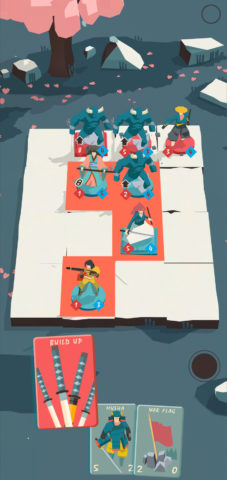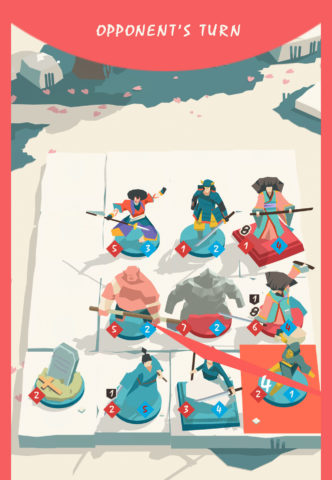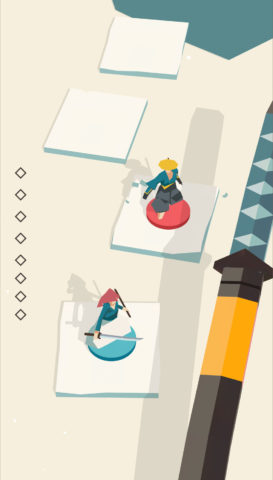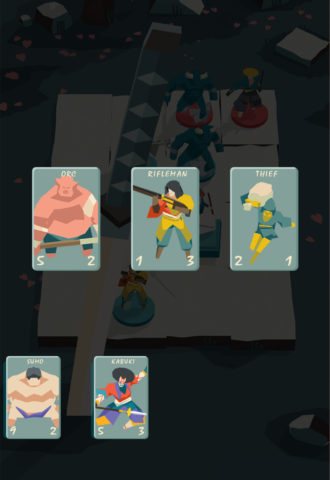A strategic card game with board game flair
Miyamoto is not – as we first assumed – named for gaming legend Shigeru Miyamoto, creator of Super Mario, Donkey Kong, and the Legend of Zelda. Rather, its title is in honor of legendary Samurai Musashi Miyamoto, generally considered to be Japan’s greatest swordsman of all time. As such, it involves plenty of sword combat, but there’s more than a pinch of fantasy here too with skeletons and spells taking their place alongside ronin and royalty.
Like chess, the overall aim of Miyamoto is to protect your king (or in this case, hero – there are eight to unlock) long enough to destroy the opposing hero. Unlike chess, more pieces can be added to the board (a 4×4 grid) by playing cards from your hand. You can play as many cards as you like each turn, though most characters must wait a turn to act, and overcrowding the board isn’t always the best tactic. Once your team is in place and ready for action, you’re free to shuffle them around and lay down some warrior justice.
Every character – charmingly represented on the board by a 3D figurine – has an attack value, a health value, and some kind of perk, like the ability to buff adjacent teammates or immediately draw two extra cards. These characters can damage each other with attacks, and if their health drops to zero they’re removed from the game. Destroy the enemy hero and you’ll instantly win, even if your army is being overwhelmed from every other side!
Besides fighters, there are land cards like walls and graveyards which can’t attack, but offer passive bonuses until destroyed – and spell cards, which can do anything from boosting a minion’s attack power to raining fire down on a line of enemies. None of it is especially complex, but with lots of cards affecting each other in various ways, there are plenty of strategies to consider. It’s pretty satisfying to lay down a sequence of cards that synergize with each other before destroying the enemy from a seemingly unwinnable position.
Miyamoto has a pleasantly minimal swords-and-samurais aesthetic and does give the impression of moving real pieces on a board game. In fact, the whole game takes a pleasingly tactile approach, from opening a three-dimensional box to access the pieces to swiping a low-poly sword from its sheath to commence battle. It’s not going to blow you away, but it’s certainly nice.
However, Miyamoto does suffer from a lack of instruction and a few questionable interface choices. You’re thrown right into your first match without being told anything at all about how to play or what any of the important numbers mean. Some players will enjoy this hands-off approach that forces you to learn on the job, but some kind of introductory tutorial would save Miyamoto from turning off less determined players.
The other thing worth mentioning that this is a deck-building roguelike game. If you don’t speak gamer, that roughly translates to “collect better cards to help fight increasingly tough battles, but lose everything and start from scratch if you get beat.” This kind of challenge can be frustrating when you’re repeatedly thrown back to the baby levels before you can retry the tough stuff, but the randomized decks at least mean every run-through plays slightly differently. And, thankfully, there are no collectible card packs in sight – so you can put away your in-app purchase money.
Overall, this is a decent strategy experience that feels like a combination of digital card game Solitairica and digital board game Hitman GO – unfortunately, it never quite reaches the heights of either.





